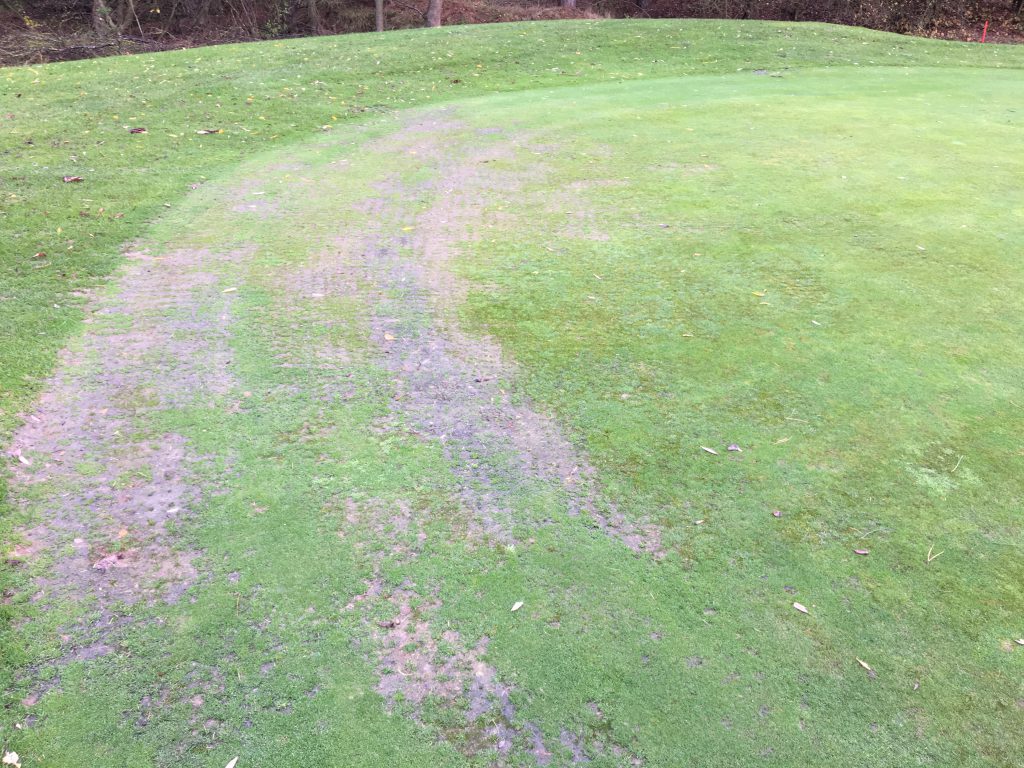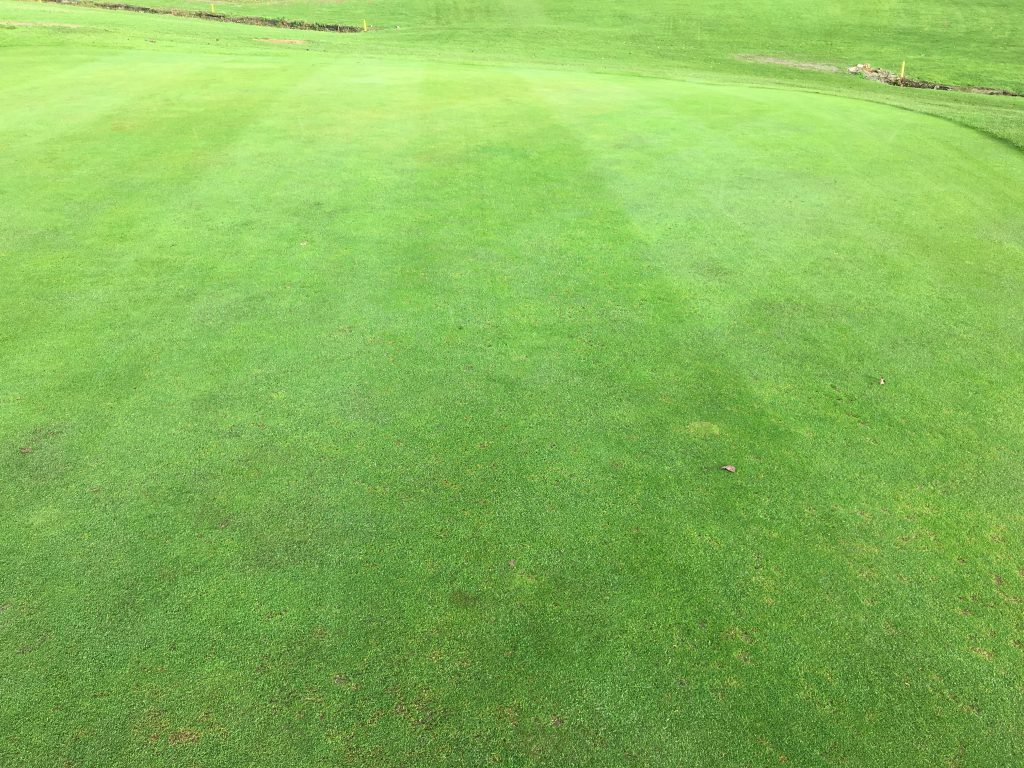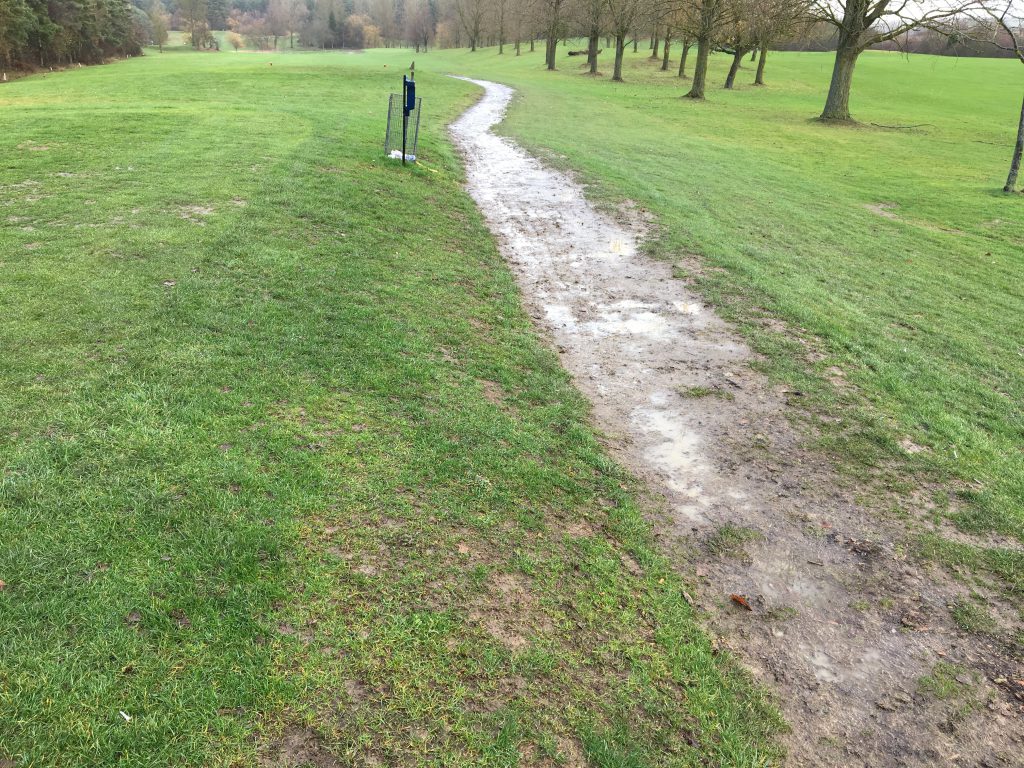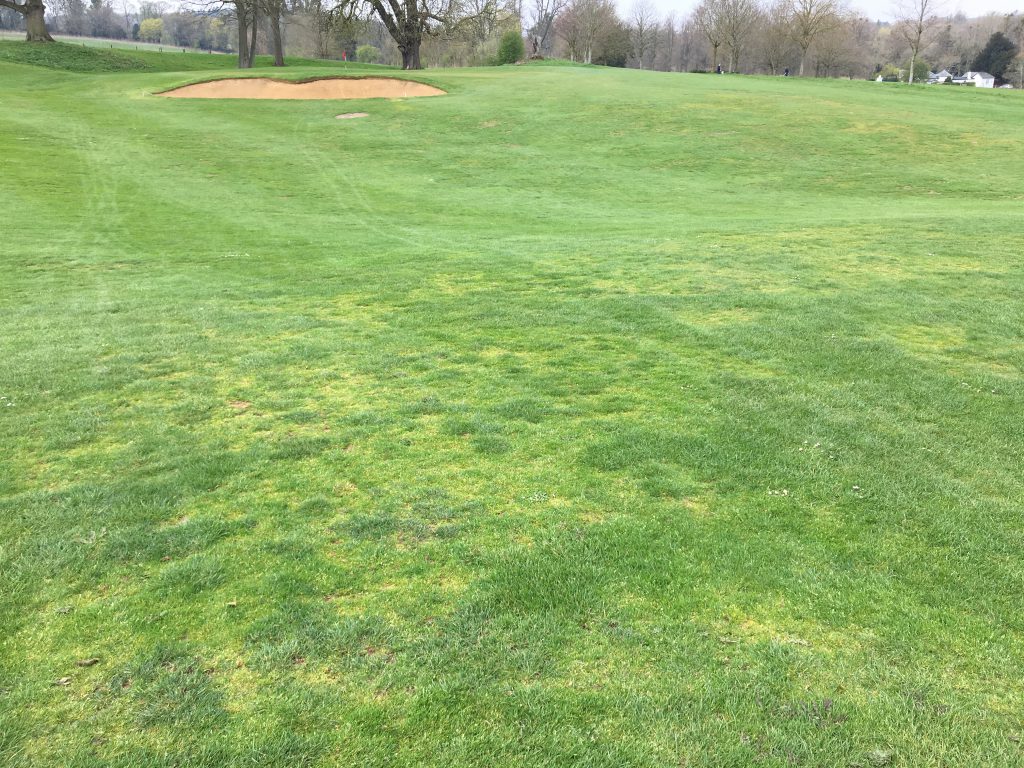How to achieve putting surface consistency
Related Articles
Achieving consistency in your putting surfaces is one of the most important roles a greenkeeper has, yet it’s also one of the most difficult. Age of the greens, irrigation changes and the weather are just three factors that can cause inconsistency. Here, agronomist Noel Mackenzie explores how these issues can be overcome.
The total golfer experience is not something we often stand back to take in properly as we tend to get focused on particular issues and problem solving approaches. However, it pays to step back once in a while and ask what is it we are providing and what is it that is expected of us in this demanding sphere of turf management and facility provision. It was bought home to me in a discussion with a ex-head greenkeeper (now sales technical representative) as we looked out of a clubhouse window at a seminar; he said to me: “What is wrong with this picture”? I confessed I was looking at a very weak area of fairway on the right with probably 30 per cent ground cover – he, on the other hand, was looking at the mowing pattern and the lack of care in its direction toward the green on what looked to be a nice hole otherwise! Which of us was right? In reality it was both of us, but the key thing is we saw different things in that split second. It got me thinking about greenkeepers and how we weave our magic!
The most critical area for consistency is the greens, their putting surface performance and their visual qualities. There is a whole range of ways of measuring and assessing the surfaces and to some extent all greenkeeping teams should run an assessment of the putting surface(s) on a daily basis if at all possible. This provides valuable data for the supporting consultant and also an answer for those players that seem to delight in finding surfaces under performance a reason to gossip and spread trouble for greenkeepers and their clubs. Data aids greenkeeper experience and job satisfaction plus it prevents from over preparation as much as under preparation. Data also gives the greenkeeper the perfect tool to show in an impartial and dignified way that the performance is at a certain level.

Inconsistent putting surfaces look terrible and play even worse!
The challenges are numerous and critical when different constructions are present on a course, for example where additional greens have been added or the course extended or holes rebuilt. All such situations tend to create differences in the soil hydraulic behaviour (water behaviour) and this impacts significantly on playing performance. Surfaces that are wetter might also attract more of certain diseases, moss, certain weed and grass types and, of course, if wetter, more organic matter accumulation and thatch development. Whichever the case, it may be that the consistency of the playing surface is compromised.
Age of greens and their management impacts on grass species composition and at this time of year growth rate differences between species is a particular problem for early season course consistency with putting surface smoothness causing difficulty with pace and ball deviation. Even the slightest nuances in the surface and slight changes in irrigation coverage have impacts on species distribution in the surface.
The springtime growth differentiation issue is not long-lived, usually lasting around four to six weeks and generally is over by around late May / early June once growth has stabilised among all species. The main tools to tackle this are
- Ensuring optimised growth through correct nutrition – this is crucially important when considering nutrient sources and which products to use.
- Sensible cutting heights to control early shooting growth species (colonial bents, Agrostis cappillaris, ryegrass, fescues and bring them in line with the less enthusiastic species, usually Poa annua, creeping bent and so on)) – it all depends on what you have growing and its condition.
- Topdressing aids smoothing the spring surfaces and must be light and dusted in to avoid smothering the grass. This is particularly difficult because grass may have surges or bursts of growth and then be suppressed by prolonged periods of cold weather lasting as much as month – proceed with caution!
- Verticutting can proceed even if growth is limited because recovery is assured in the not-too-distant future even if not right away and unless taken to unnecessary levels of extreme, is hard to overdo. Establishing vertical leaf growth and cover is important for ball roll and also to prevent organic matter accumulation on the surface.
- Rolling can be a useful tool for settling the surface that has become uneven following frosts or maintenance operations such as spring hollow tining or vertidraining. Using vibrating rollers can help to work in topdressing nicely too so long as it is dry enough to be worked in.
- Mowing – sometimes it is only cutting a bit tight that gets the uniformity back – this is especially true of mixed swards where the Poa annua refuses to grow but the bent or ryegrass is pushing on relentlessly.
Greens and approaches need harmonising as much as possible and in reality, no two putting surfaces will be identical even if constructed from the same materials, turf and so on – microclimate impacts see to that. But for the golfer the behaviour of the ball being somewhat consistent is important.
Tees also need to be consistent and are perhaps both the easiest surfaces to make uniform and possibly the least often found to be consistent. The first tee is generally the first encounter of the golfer with the course and is the biggest first impression.

Uniform putting surfaces, even winter surfaces like this one, can look and perform well
Teeing ground lack of consistency is generally due to a combination of different constructions applied on many courses over the years and because the wear damage varies considerably between long holes and the par threes which take such a lot of abuse. What can we do to address this? In the short term, maintenance is what it really boils down to and good general maintenance making life easier for both the plant and the greenkeeper should be the goal. Sensible mowing heights, provision or irrigation, if possible, use of wetting agents with longevity and good fertiliser practice are all important elements. To this should be added elements of aeration and regular renovation and divot mix provision, especially on busy courses and certainly par three tees. In the longer term, working toward consistency in construction on tees would help many courses considerably, therefore, if looking at a programme of tee resurfacing and builds, make the most of the opportunity to invest in these much-overlooked surfaces.
Fairway condition should be uniform around the course but the reality is that a course may cross one or more boundaries of different soil types and aspect and altitude may impact on sward type and even weed species presence.
Striping up and creating visual definition is a key part of the perception of uniformity even if it is the case that the sward type shifts from fescue to rye grass dominance around the course – the golfer does not know much what he plays on, only that he has something that looks the part!
Fairways suffer around landing zones and this can disrupt the presentation and uniformity of the surface. The solution to this is proper repairing of damage and keeping the fairway soil and organic matter management sound in the first place, that way recovery is much more likely to be successful. Excessive organic matter presence really hampers recovery of fairways.
Bunkers are the bain of achieving any consistency on a course. For a start the construction of every bunker is unique and that creates challenges which impacts on whether they drain or not, how fast the sand dries in them and whether they are prone to sand loss in wind or wash out in the rain. Life would certainly be improved if there were no bunkers and they might well be up the list of many a greenkeeper’s Room 101 wish list!

Nasty pathways are as bad as inconsistent ones
As with teeing grounds and greens, construction plays a huge part in bunker consistency. Bunkers have certainly improved on some courses since I started consulting over 25 years ago, but there are still far too many with poor finishes, collapsing faces, stone ingress and that most jarring visual impact – different sand types and colours. Nothing stands out more strongly than different sand colour in the bunkers and this will almost certainly draw swift criticism from players in no time. Unfortunately, the financial situation of golf in a competitive market doesn’t help because if local courses are in a price war it means there is no money to invest in the course and make it nice by off-setting the years of abuse and damage sustained from play. Overall my impression is that while bunkers have improved generally on many courses there are others where the damage is not being addressed. I went to one course at Christmas time last year and again this year and the damage and loss of condition was exactly as it was 20 years ago – really it was a facepalm moment.
Pathways are a non-playing surface that golfers experience directly and over the years many clubs have used many different materials. In all instances the crucial thing is try to use just one type of material for pathways, moving from tarmac to shale to woodchip to tree roots is not going to win prizes for consistent player experience.

Fairway damage in drought or by bird damage reduces consistency
Presenting consistency on a golf course is all about presenting quality throughout to give the impression that the club pays attention to detail in a way that separates it from the also-rans. The player likes to feel special and that he is at the best venue he can be or that his membership or green fees are being used properly. Whether the consistency is paths, greens’ performance, tee markers freshly painted, bins emptied, fairways with full grass cover and so on, that impression of the detailed quality is so important.
As a greenkeeper it is as well to bear in mind that perception of quality is at least as important as the actual quality itself. Football groundsmen have long known that a few stripes on a pitch will generate compliments like ‘oh it’s like Wembley’, despite the fact that the average player struggled to run 100 yards in the warm up – perception is a powerful thing. Therefore, while data and stimp / green speeds and hardness readings and the like are all fascinating and valuable on a performance surface, never underestimate the power of a hand-cut green compared to a triple cut one … just make sure they are all cut the same!

























